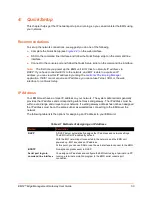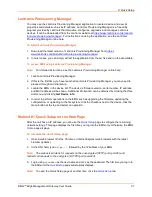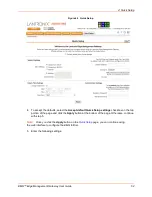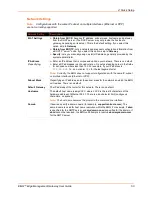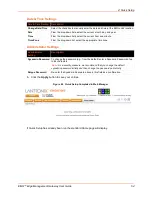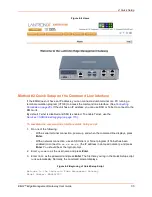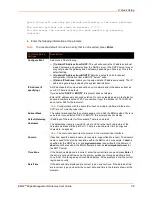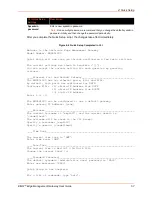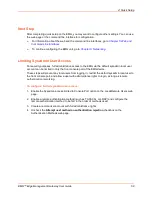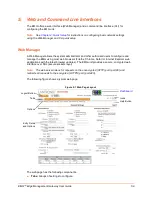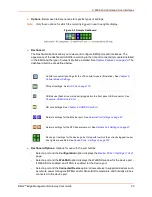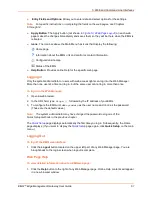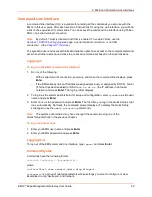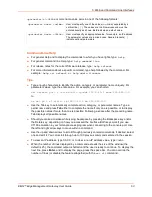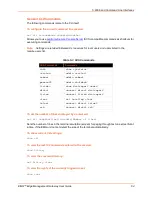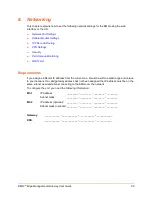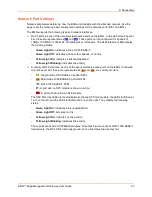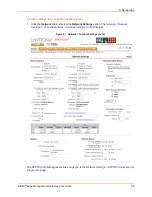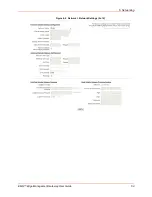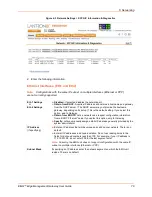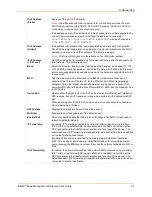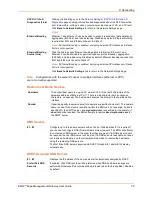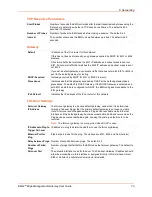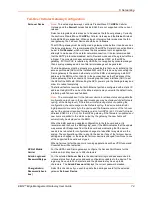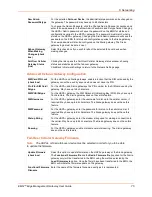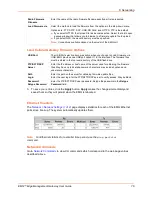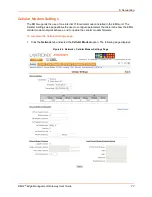
5: Web and Command Line Interfaces
EMG™ Edge Management Gateway User Guide
62
Command Line Interface
A command line interface (CLI) is available for entering all the commands you can use with the
EMG. In this user guide, after each section of instructions for using the web interface, you will find
a link to the equivalent CLI commands. You can access the command line interface using Telnet,
SSH, or a serial terminal connection.
Note:
By default, Telnet is disabled and SSH is enabled. To enable Telnet, use the
web page, a serial terminal connection, or an SSH
connection. (See
.)
The sysadmin user and users with full administrative rights have access to the complete command
set, while all other users have access to a reduced command set based on their permissions.
Logging In
To log in to the EMG command line interface:
1. Do one of the following:
-
With a serial terminal connection, power up, and when the command line displays, press
Enter
.
-
If the EMG already has an IP address (assigned previously or assigned by DHCP), Telnet
(if Telnet has been enabled) or SSH to
xx.xx.xx.xx
(the IP address in dot quad
notation) and press
Enter
. The login prompt displays.
2. To log in as the system administrator for setup and configuration, enter
sysadmin
as the user
name and press
Enter
.
3. Enter
PASS
as the password and press
Enter
. The first time you log in, the Quick Setup script
runs automatically. Normally, the command prompt displays. (To display the Quick Setup
script again, use the
admin quicksetup
command.)
Note:
The system administrator may have changed the password using one of the
Quick Setup methods in the previous chapter.
To log in any other user:
1. Enter your EMG user name and press
Enter
.
2. Enter your EMG password and press
Enter
.
Logging Out
To log out of the EMG command line interface, type
logout
and press
Enter
.
Command Syntax
Commands have the following format:
<action> <category> <parameter(s)>
where
<action>
is
set
,
show
,
connect
,
admin
,
diag
, or
logout
.
<category>
is a group of related parameters whose settings you want to configure or view.
Examples are ntp, deviceport, and network.



